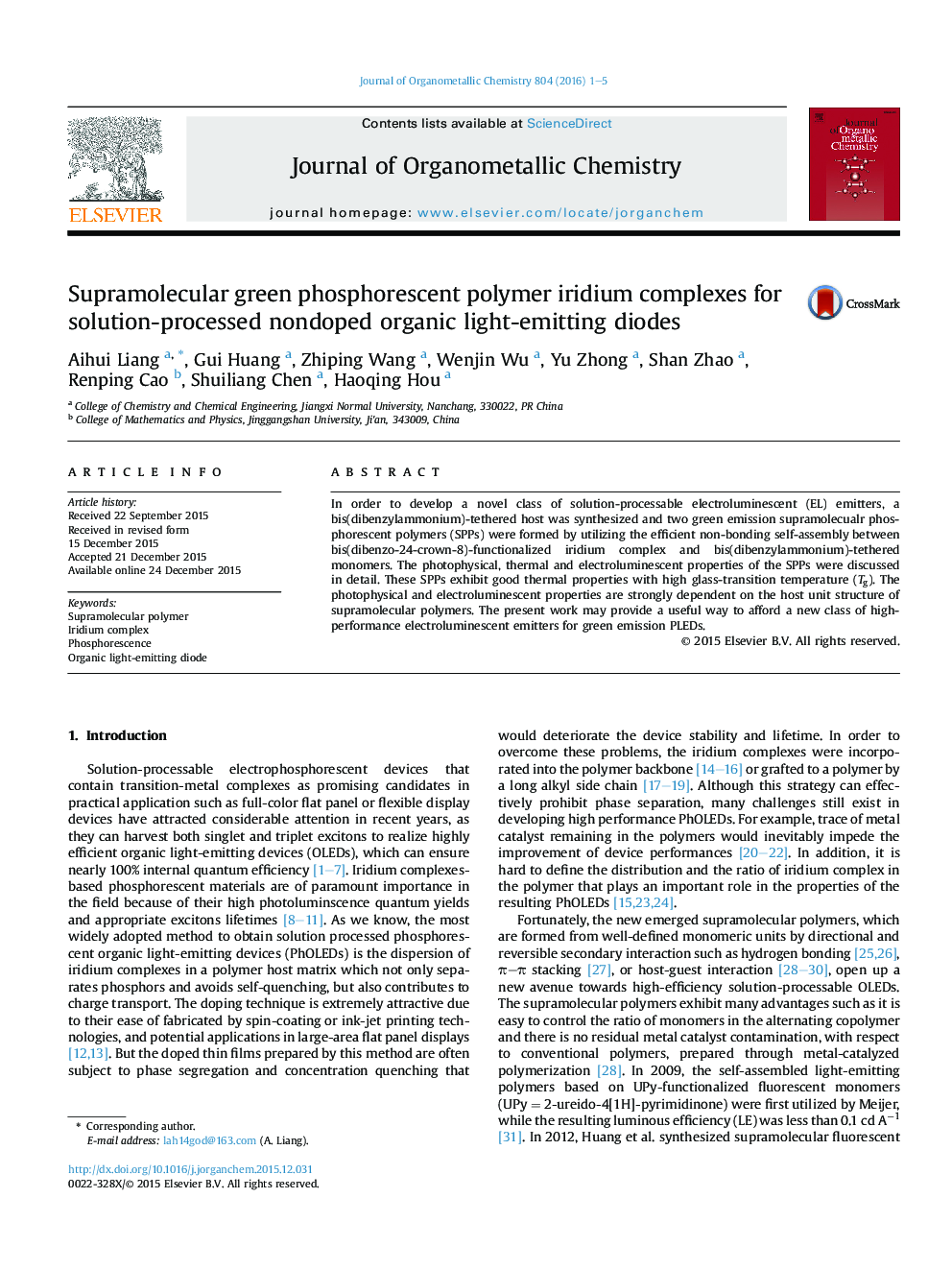| Article ID | Journal | Published Year | Pages | File Type |
|---|---|---|---|---|
| 1323097 | Journal of Organometallic Chemistry | 2016 | 5 Pages |
•Two green emission SPPs were formed by utilizing the non-bonding self-assembly.•These SPPs exhibit good thermal properties with high glass-transition temperature.•The photo- and electro-luminescent properties are dependent on the hosts' structure.
In order to develop a novel class of solution-processable electroluminescent (EL) emitters, a bis(dibenzylammonium)-tethered host was synthesized and two green emission supramolecualr phosphorescent polymers (SPPs) were formed by utilizing the efficient non-bonding self-assembly between bis(dibenzo-24-crown-8)-functionalized iridium complex and bis(dibenzylammonium)-tethered monomers. The photophysical, thermal and electroluminescent properties of the SPPs were discussed in detail. These SPPs exhibit good thermal properties with high glass-transition temperature (Tg). The photophysical and electroluminescent properties are strongly dependent on the host unit structure of supramolecular polymers. The present work may provide a useful way to afford a new class of high-performance electroluminescent emitters for green emission PLEDs.
Graphical abstractTwo green emission supramolecular phosphorescent polymers (SPPs) as a novel class of solution-processable electroluminescent emitters were synthesized by self-assembly between bis(dibenzo-24-crown-8)-functionalized iridium complex and bis(dibenzylammonium)-tethered host monomers. The photophysical and electroluminescent properties are strongly dependent on the host unit structure of supramolecular polymers.Figure optionsDownload full-size imageDownload as PowerPoint slide
